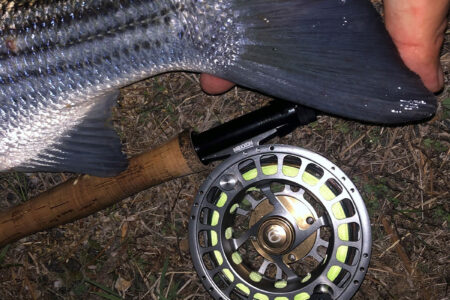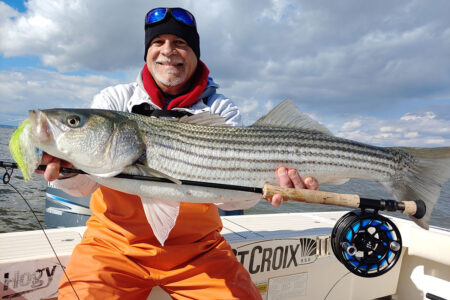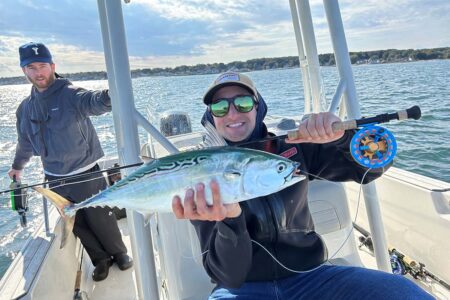
Instructions on using a sight fishing technique on trout with nymphs.
Sight fishing to specific fish in shallow water with nymphs is some of the most intriguing, fun and satisfying trout fishing you can find. It’s not necessarily that hard to do, and you can readily do it in small streams so common throughout the Northeast.
To start out, first find some shallow water which holds trout, and of course, trout you can see. It’s a given that the water is going to have to be reasonably clear, after all it’s sight fishing. A sunny day around the middle of the day offers best sighting conditions, but any light conditions, including overcast skies, at any time of the day can be good as long as you can see the fish and its reactions.
First thing to do is spot the fish. Usually you can clearly see them. If not, maybe you’ll locate them by noticing a trout’s submarine shape or perhaps it’s shadow. Trout for sight fishing are way easier to see on a light bottom such as light sand or pebbles. A flat surface or one with little disturbance makes it a lot easier than trying to see through, say, a heavy riffle. You’ll also be fishing for individual fish with this method. If you see a school or pod of trout you’ll pick out an individual in the group and fish to that specific fish.
It will help if the water isn’t that deep, 1- to 3-feet is ideal. Get into position, wading or from the bank, with the targeted fish up and across, directly across, or across and down from you. Up and across will probably give you your best shot. It gives you the lowest chance of spooking the fish too. In some streams trout will gather directly below you (downstream) when you’re wading disturbance loosens food (nymphs and eggs) from the bottom. In this case you’ll have willing takers below you.
This is short line fishing. Many times you’ll be fishing with just the leader outside the rod tip or just a few feet of line at most. Guess what? You don’t need to fly cast well to use this method effectively.
Most of the time you don’t need much added weight on your leader, often one size B or BB shot will do. With more current and depth you may need more, shallower and slower less. You want just enough weight so that the shot and fly drift just over the bottom at current speed. The shot can occasionally “tick” the bottom during the drift as well. One thing I’ve noticed is that those “close in” fish want that fly right on their nose, at nose depth. They often won’t rise for it. I often position that split shot only 6 or 8 inches above the fly on the tippet. This insures that your fly is in the “take” zone.
Have the fish positioned, say, 5 to 10 feet away, and at an up and across stream position from you. Now, you essentially “flip” the fly rig, often an overhead “cast” so the fly rig lands directly upstream of the trout or upstream and a little to the other side of the fish. Depending on depth and current speed you may have to lead the fish at different distances. Usually it’s 2 to 4 feet above the target, but in fast, deep water it could be more. Ideally, you always want that fly to be on the fish’s nose when it drifts by.
You want a “drag free” drift, meaning the fly drifts by the fish as if it’s attached to nothing, like it’s “swimming free”, just like the natural nymph, cress bug, shrimp, or fish egg would do. After the fly lands on the water follow its drift (even if you don’t see the fly and the drift becomes “imaginary”) downstream with your rod tip. Don’t pull the fly.
You often won’t get hit on the first or second drift even if you’ve made good presentations. Keep making those presentations. The fish may not have seen your offering yet, it may not want to move far for the fly, or perhaps your presentation wasn’t drag free.
Sometimes you have to not only get your fly to land a foot or two upstream from the fish but 6 inches, a foot, or two on the other side of the fish as well. This may be the only way to insure that the fly passes right in front of its nose. Be aware of this.
Sight fishing trout with nymphs, scuds, eggs, and “worms” is just so exciting and fun, with the entire game playing out visually right in front of you. When you start hooking up it gets even better! It’s not that hard to do and you don’t even have to be a good fly caster to do it well. It just takes practice. With that you succeed and along the way gain that most important factor in fishing, confidence! It’s also a game you can play year-round. Give it a try.



